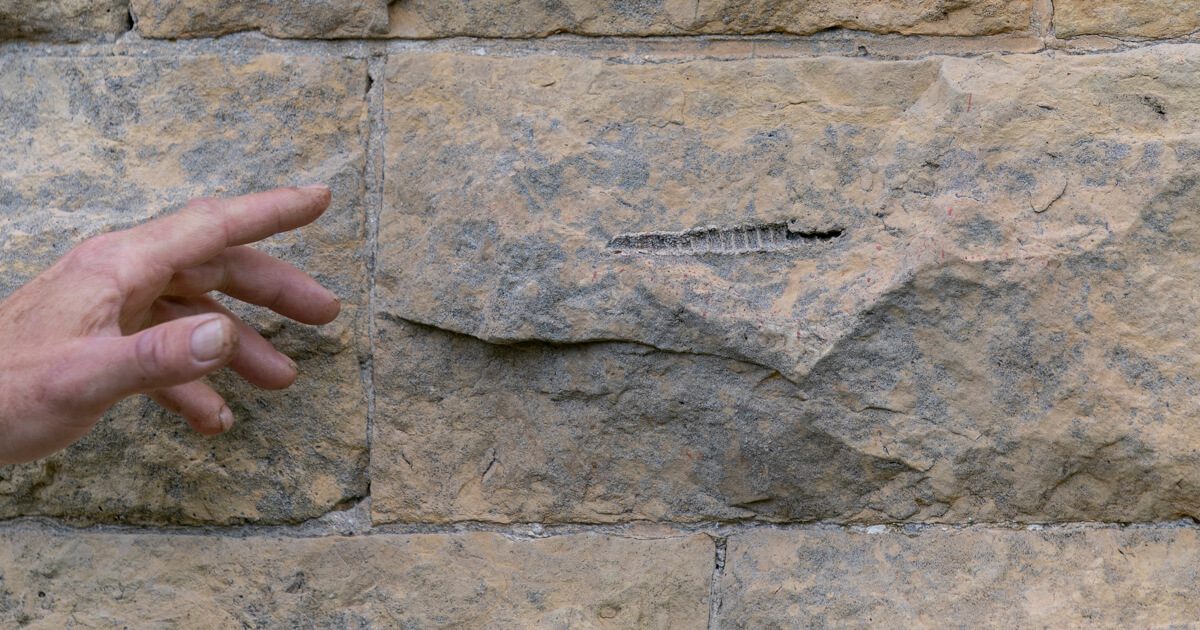
#image_title
Self-guided tours, masks for sale.
For the better part of two months, most people have been living in a cave of quarantine. Now, one popular Wisconsin tourist attraction hopes people will still want to step into the real kind.
Cave of the Mounds, 25 miles west of Madison, opened for tours on May 26 after being closed for 10 weeks because of the COVID-19 pandemic. As its busy season kicks in, the cave will now operate at a reduced capacity. It won’t be business as usual but it will be business, and that’s what matters most, says General Manager Joe Klimczak.
“Compared to state parks or national parks, where they have funding, we don’t have any of that,” Klimczak said of the privately owned attraction. “We’re only supported by our visitation. It was important for us to reopen in a way that is safe for our visitors and safe for our staff. We believe we can do that.”
The cave’s hour-long guided tours are gone, replaced by self-guided tours that wind two-thirds of a mile 40 to 70 feet below ground. Railings along the way guide the figure eight route that has just one entry/exit.
Signage will provide the history and science that guides once did. Staff will be situated in the cave to answer questions and keep watch. Rails and gift shop counters will be constantly sanitized, Klimczak said.
“We’re letting people go through in their own groups, their own family, their own germ pod or quarantine groups,” Klimczak said of tours that are timed seven minutes apart. “It’s easy to navigate through there, but now they can learn about the cave in a more socially distanced way.”

Cave staff are required to wear masks. Customers are asked to, but it’s not required; masks are available to purchase for $1.
Visitor numbers increased in the first week after reopening, starting with about 30 people a day to 250 a day over the weekend. On a full day of tours, Cave of the Mounds would have 2,000 visitors and last year approximately 100,000 people went through. Klimczak knows that won’t happen this year as field trips and other educational programming won’t be offered. Following COVID-19 guidelines for “amusement places,” the cave will allow 25 percent capacity at a time, which is about 50 people instead of 200.
The cave closed on March 17. Fifteen year-round staff members were placed on furlough at full pay and benefits. As it became clear this was no short-term challenge, management made changes that included layoffs. Counting seasonal tour guides, Klimczak says, last year’s payroll was 75 people. Now it is 10, where it will stay.
“Like a lot of businesses, we realized we’re going to have to pivot to a smaller operation, and probably for a couple of years,” Klimczak says.
Cave of the Mounds is owned by the descendants of Ebenezer Brigham, who first settled the site as a lead mine in 1828.

Another privately owned cave, Crystal Cave in northern Wisconsin 50 miles west of Eau Claire, remains closed. At Cherney Maribel Caves County Park in Manitowoc County, guided tours of the larger caves have been postponed by park-goers can go into the smaller caves there.
Changes at Cave of the Mounds’ site in recent years will help it weather the new normal, Klimczak said, and were in place to enhance the cave visit or even be a destination without going through the cave at all.
Cave After Dark winter events included self-guided tours that proved popular. There are also walking trails, butterfly and prairie gardens, and a fossil hunt in the original limestone foundation of the property’s 1883 barn that looms above the cave.
Klimczak’s biggest worry is becoming too crowded, spooked by Memorial Day scenes in Lake Geneva and Lake of the Ozarks. But he said the staff is committed to the safety measures in place and to making adjustments if needed.
“We follow the science. We are a science center,” Klimczak says. “Just because we wish it would go away doesn’t mean it’s going to.”

Why a Wisconsin News Outlet Killed Its Comments Section
The Wausau Pilot & Review has joined the list of media companies that have pulled the plug on their comments section — citing the toxic...

Is your ID ‘real’? Everything to know about Real IDs before they’re required for travel
Starting May 7, 2025, you’ll need a Real ID to fly within the US. The Department of Homeland Security initially set a deadline for late 2020 before...

Free lead testing in Milwaukee: What you need to know
Lead poisoning in Milwaukee is back in focus after a case at Golda Meir Lower School. Officials stress the importance of testing for children. In...

You may qualify to file your taxes for free in Wisconsin—here’s how
An estimated 830,000 Wisconsin residents will be eligible to use the IRS Direct File program to file their taxes this year. Wisconsinites have some...






